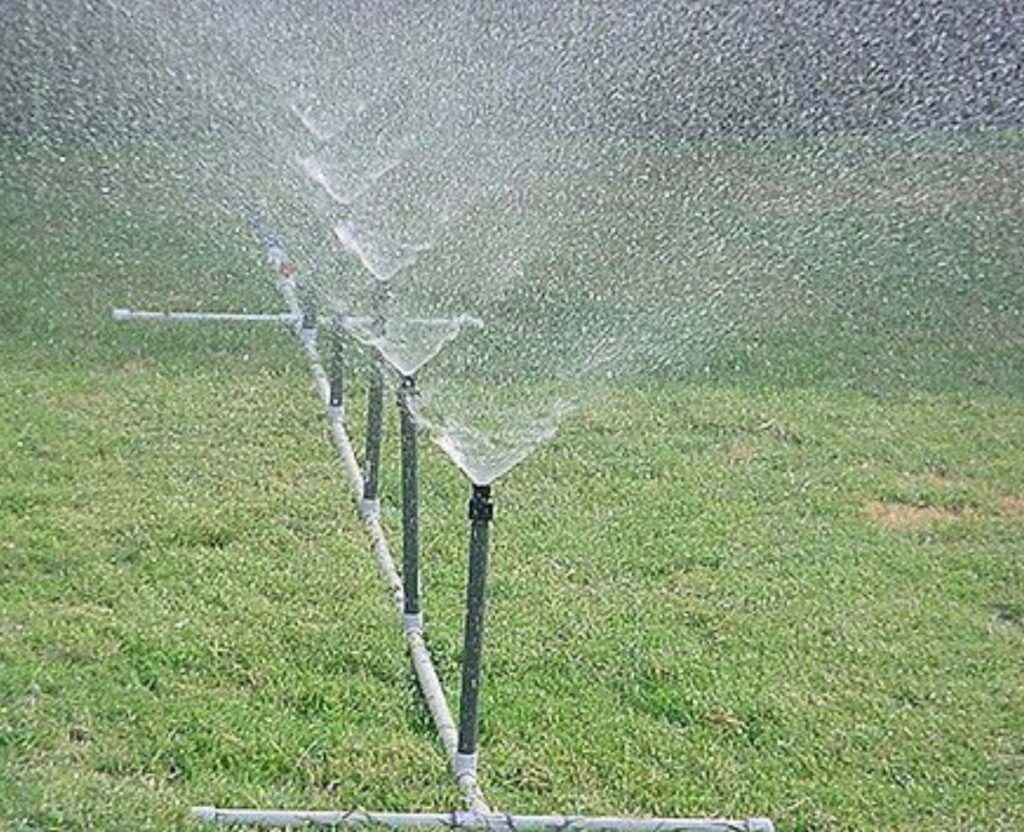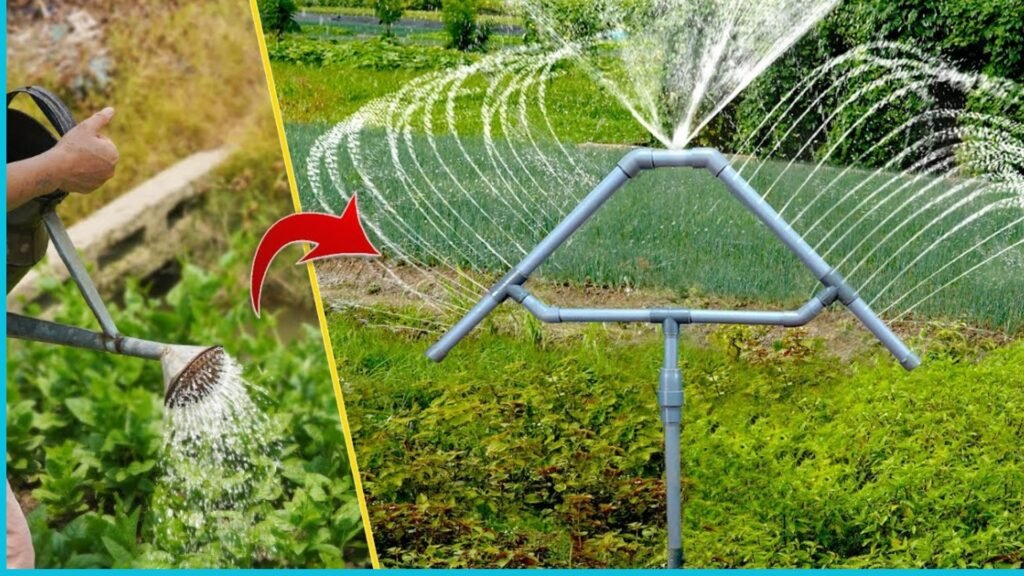Sprinkler PVC pipes are vital for irrigation. They ensure water flows efficiently to plants and The irrigation system needs sprinkler PVC pipes as one of its essential components. The pipes maintain efficient water movement to plants alongside lawn areas. According to observation you will find sprinkler PVC pipes operating in gardens and farms along with residential properties. An optimal system requires you to select the correct pipe type.
PVC pipes serve as one of the mainstream selections for various applications. Sprinkler PVC pipes deliver extended service life while offering good resistance to pressure variations and different weather conditions. Proper maintenance helps PVC pipes remain dependable throughout several years of operation. This document reveals everything you need to know about selecting, installing, and keeping PVC pipes for sprinkling purposes.
Why Use PVC Pipes for Sprinklers?
The execution of irrigation systems depends on PVC pipelines. They are durable and cost-effective. Installing PVC pipes remains easy because they do not leak from improper fittings. PVC pipes deliver different benefits based on the irrigation system requirements, either rigid or flexible types fit.
Key Advantages of PVC Pipes
- Long-lasting and sturdy.
- Resistant to weather changes.
- Handles pressure well.
- Easy to handle during installation.
Flexible pipes work well for uneven layouts. Rigid PVC pipes are better for systems requiring steady, strong water flow. Selecting wisely keeps your system functioning smoothly.

Types of Sprinkler Pipes
Sprinkler systems use various pipe types. Two main options dominate the market. These are PVC pipes and HDPE pipes.
1. Rigid PVC Pipes
These are thick, unyielding pipes designed for durability. Ideal for main lines in sprinkler systems, rigid PVC pipes are secure and resistant to pressure changes.
Benefits of Rigid PVC Pipes
- Strong against external weight.
- Minimal risk of leakage.
- Ideal for high-pressure water needs.
2. Flexible PVC Pipes
Simple bending properties of these pipes make them suitable for creating curved irrigation configurations. Although designed for small gardens and irregular ground surfaces these pipes perform well in such areas.
Advantages of Flexible PVC Pipes
- Easy to install in compact areas.
- Adapts to bends and corners.
- Offers flexibility in designing systems.
3. HDPE Pipes
HDPE pipes work excellently as replacement options in conditions affecting by freezing temperatures and rocky terrain. These pipes provide both extraordinary strength and light weight attributes which allow their use in large-scale irrigation systems.
Why Choose HDPE Pipes?
- Performs well in cold climates.
- Flexible yet durable.
- The material remains strong against breaking when exposed to frost conditions.
System performance increases together with cost savings when you use the appropriate pipe materials for different system areas.
Importance of Proper Pipe Sizing
Correct pipe sizing stands as a critical decision. The water distribution operates smoothly by reaching every sprinkler head. Using the wrong size can cause pressure drops or poor irrigation coverage.
Common Pipe Sizes
- ½-inch pipes for small gardens or single zones.
- ¾-inch pipes for medium-sized areas.
- 1-inch pipes for larger systems with higher water needs.
Measure your system’s flow requirements before deciding on pipe diameter. Larger pipes offer better pressure handling but may cost more.
Essential Features to Look for in Sprinkler Pipes
Not all pipes are the same. Consider these pipe features to make the best choice.
- The chosen pipes must match or surpass the maximum water pressure of your system. The high-pressure main line applications benefit best from Schedule 40 rigid PVC pipes.
- UV Protection: Sunlight exposure requires pipes to receive protection against ultraviolet rays before installation. This prevents wear and extends their life.
- Resistance to Weather
Cold regions need pipes with freeze resistance. HDPE pipes are excellent in such conditions.
Connecting PVC Pipes with Fittings
The connection of pipes through PVC fittings directs water toward sprinkler heads.
Common Fittings
- Couplings: Join two straight pipe sections.
- Elbows: Allow changes in direction.
- Tees: Create branches in the irrigation layout.
Ensure fittings match the diameter and type of your pipes.
How to Install Sprinkler PVC Pipes
The correct installation process constitutes the foundation for achieving efficient irrigation. The setup process can be performed through this systematic direction.
Plan the Layout
Sketch the irrigation area. Mark sprinkler head locations and pipe routes. Check your water source and pressure.
Dig Trenches
Dig trenches for underground pipes. Keep them deep enough to avoid damage from external forces.
Cut and Connect Pipes
Use a PVC cutter to size pipes. Attach fittings with PVC glue for leak-proof connections.
Install Sprinkler Heads
Connect sprinkler heads to the pipes. Test their coverage area before finalizing the setup.
Test the System
Turn on the water to check for leaks or blockages. Resolve any issues before covering the trenches.
Maintenance Tips for PVC Pipes
Regular maintenance keeps systems working efficiently. It prevents leaks and breakdowns.
- Runtime Maintenance Requires Immediate Fixing of leaks, as well as swift replacement of damaged parts, because it helps stop additional problems.
- Regular adjustments of sprinkler heads should maintain precise alignment for consistent water coverage.
Where to Buy Sprinkler Pipe Supplies
Purchase your supplies from relevant stores which include Royal PVC Pipes as an option. The purchase of supplies from one retailer maintains compatibility between parts. Take advantage of bulk purchasing offers.
Must-Have Supplies
- Pipes and fittings.
- Connectors and valves.
- Pipe cutters and glue.
Create a checklist before shopping. This helps avoid missing essential parts.
Repairing Sprinkler Pipes
At times, even strong pipes can break. Fixing damaged pipes quickly saves water and money.
Tools Needed for Pipe Repair
- PVC cutter.
- Waterproof tape.
- PVC glue.
- Spare fittings.
Patch minor leaks with tape. For larger damage, replace the affected section.
Enhancing Your Irrigation System
- Irrigation Timers: Automate watering schedules.
- Pressure Regulators: Manage water pressure effectively.
- Drip tubing represents the best approach for watering plants using low water output.
Modern tools should be used to boost system operation and extend system lifespan.
Conclusion
The success of sprinkler systems depends on selecting appropriate piping systems. Each of the three piping options, including rigid PVC and flexible pipes, and HDPE piping, caters to its distinct application. CAT your irrigation demands to select an appropriate solution. Your garden and lawn will prosper automatically with an appropriate system, together with consistent maintenance practices. The process of planning installation reduces both water consumption and operational cost, and time usage. Make every drop count!
FAQs
1-How long do PVC pipes last?
An expected service life of more than 10 years comes with proper maintenance of PVC pipes.
Can PVC pipes handle freezing?
Regular PVC pipes experience fractures when subjected to freezing temperatures. Property owners should use HDPE pipes when maintaining their systems in regions with freezing temperatures.
What’s the difference between Schedule 40 and Class 200 pipes?
Class 200 pipes serve applications with low-pressure requirements and have thin walls at a budget-friendly price.

